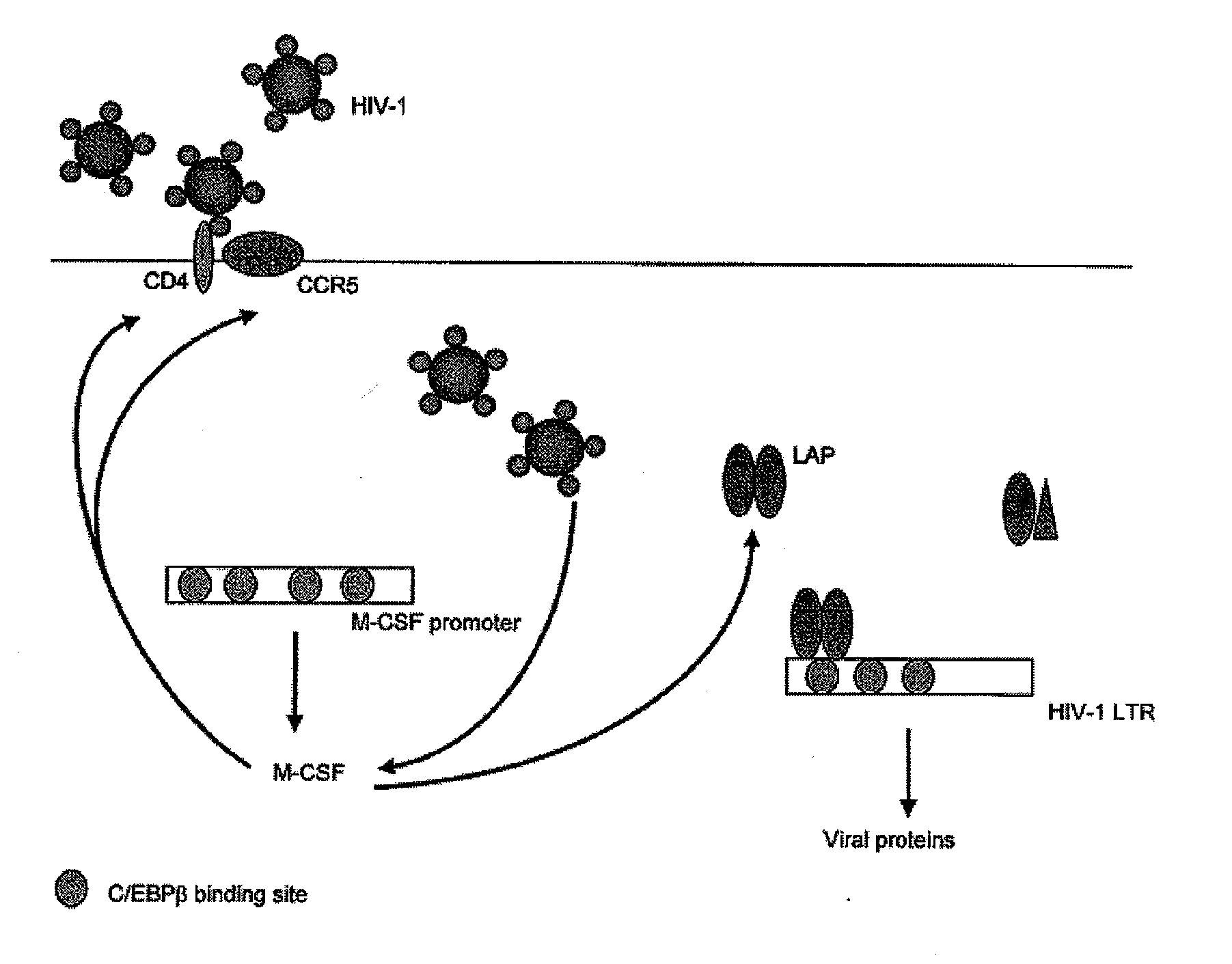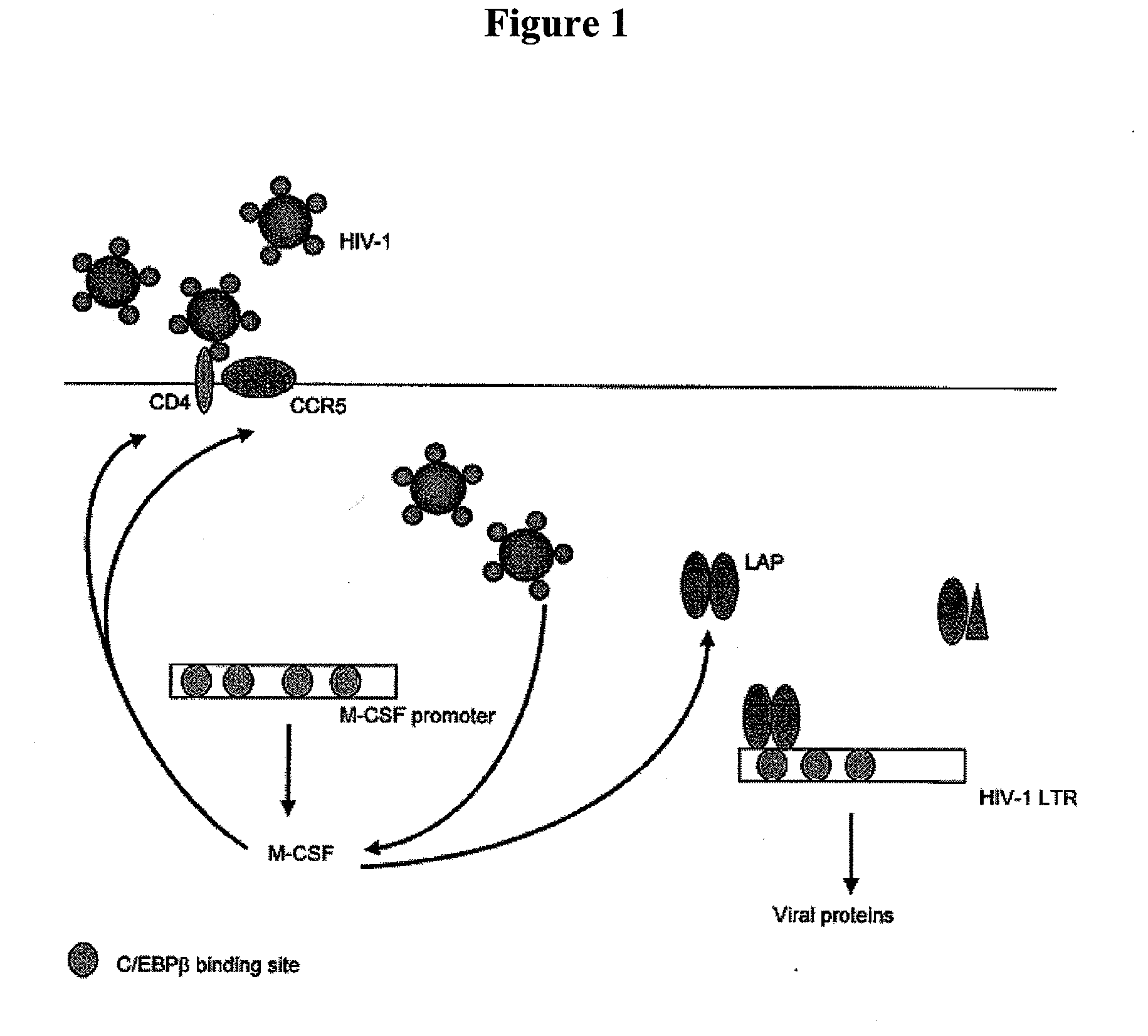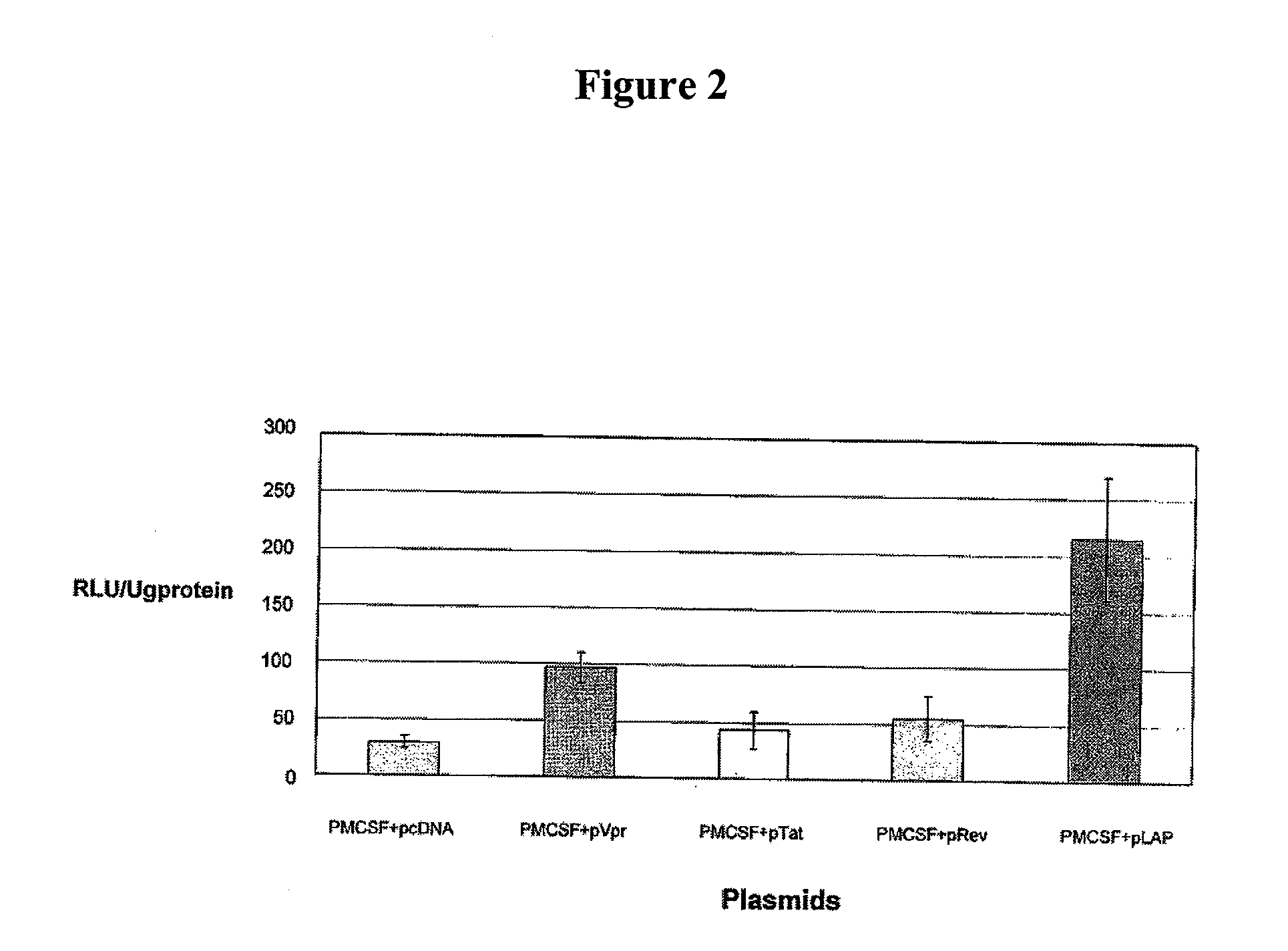Treatment of hiv-1 by modulation of vpr activation of the m-csf promoter
a technology of m-csf promoter and hiv infection, which is applied in the field of hiv infection treatment, can solve the problems of poor prognosis, increased m-csf pretreatment levels, etc., and achieve the effects of decreasing m-csf production, decreasing m-csf levels, and decreasing m-csf levels
- Summary
- Abstract
- Description
- Claims
- Application Information
AI Technical Summary
Benefits of technology
Problems solved by technology
Method used
Image
Examples
examples
[0122]Cell Preparations
[0123]Peripheral blood mononuclear cells (PBMC) were isolated from heparinized whole blood or buffy coats acquired from healthy seronegative blood donors by density-gradient centrifugation (Histopaque-1017, Sigma-Aldrich, St. Louis, Mo.). CD14+ monocytes were isolated from prepared PBMC using the Miltenyi AutoMACS system (Miltenyi Biotec, Auburn, Calif.). Briefly, cells were incubated with anti-CD14 monoclonal antibody-coated microbeads (Miltenyi Biotec, Auburn, Calif.) at 4° C. for 15 minutes and run on an AutoMacs separator. Routinely, we achieve approximately 95% purity and no detectable activation of CD14+ monocytes using this method, as demonstrated by flow cytometry. Recovered CD14+ monocytes were used immediately in transfection experiments. For macrophage preparation, PBMC were incubated in RPMI 1640 (Invitrogen, Carlsbad, Calif.) containing 20% FBS, 10% human AB serum, 2 mM L-glutamine and penicillin (50 U / ml) / streptomycin (50 μg / ml) overnight at 37° ...
PUM
 Login to View More
Login to View More Abstract
Description
Claims
Application Information
 Login to View More
Login to View More - R&D
- Intellectual Property
- Life Sciences
- Materials
- Tech Scout
- Unparalleled Data Quality
- Higher Quality Content
- 60% Fewer Hallucinations
Browse by: Latest US Patents, China's latest patents, Technical Efficacy Thesaurus, Application Domain, Technology Topic, Popular Technical Reports.
© 2025 PatSnap. All rights reserved.Legal|Privacy policy|Modern Slavery Act Transparency Statement|Sitemap|About US| Contact US: help@patsnap.com



